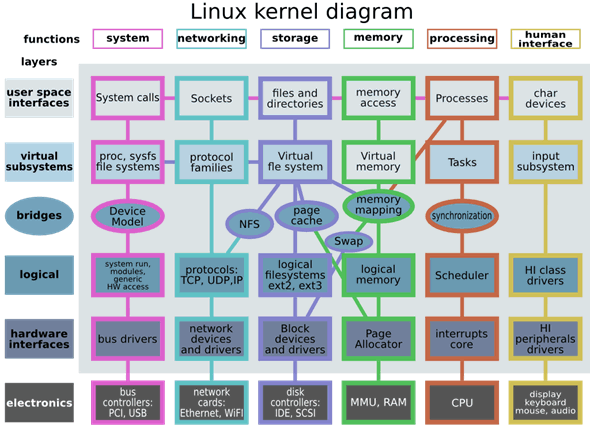
- #Describe the ways to build a linux kernel install#
- #Describe the ways to build a linux kernel full#
- #Describe the ways to build a linux kernel code#
Then, change the ` label = zzz' to ` label = linux-backup' and rerun lilo.
#Describe the ways to build a linux kernel full#
To boot one of your old kernels off the hard disk (another way to save yourself in case you screw up the new kernel), copy the lines below (and including) ` image = xxx' in the LILO config file to the bottom of the file, and change the ` image = xxx' to ` image = yyy', where ` yyy' is the full pathname of the file you saved your backup kernel to. If you would like to know more about LILO's configuration, or you don't have LILO, get the newest version from your favorite ftp site and follow the instructions. Then, rerun lilo - on newer systems, you can just run ` lilo', but on older stuff, you might have to do an /etc/lilo/install or even an /etc/lilo/lilo -C /etc/lilo/config. Make a backup copy of your old kernel and copy the bzImage which you just made into place (you would say ` cp bzImage /vmlinuz' if you use ` /vmlinuz'). ` label' is used by lilo to determine which kernel or operating system to boot, and ` root' is the / of that particular operating system. The ` image =' is set to the currently installed kernel. Look at the config file (either /etc/lilo/config for older versions or /etc/nf for new versions), and see what the current setup is.
#Describe the ways to build a linux kernel install#
It's a fairly easy package to install and work with, but it has a tendency to confuse people with the configuration file.

Otherwise, you need to use LILO directly. ` make bzlilo' will install the kernel, run LILO on it, and get you all ready to boot, BUT ONLY if lilo is configured in the following way on your system: kernel is /vmlinuz, lilo is in /sbin, and your lilo config ( /etc/nf) agrees with this. Most people use LILO (Linux Loader) for this. See the section on modules for a description of ` make modules'.Īfter you have a new kernel that seems to work the way you want it to, it's time to install it. If you haven't ever compiled a kernel before or don't have an old config file, then you probably shouldn't do this, as you will most likely want to change the default configuration. ` make oldconfig' will attempt to configure the kernel from an old configuration file it will run through the ` make config' process for you. ` make mrproper' will also delete your configuration file, so you might want to make a backup of it (. It is sometimes necessary you may wish to do it at every patch. ` make mrproper' will do a more extensive ` clean'ing.
#Describe the ways to build a linux kernel code#
That option is at the moment still available, however, given the code size of newer kernels, it is now more or less mandatory to build a bzImage because the older methods can't handle a kernel that's just too large. In older kernels, you don't have the option to build a bzImage it was simply a zImage. A compressed kernel automatically decompresses itself when executed. You can also use it to install new systems when you just dump the contents of one disk onto the other (``all this and more! NOW how much would you pay?'').Īll even halfway reasonably recent kernels are compressed, hence the ` bz' in front of the names. It can also be a handy way to boot if you accidentally remove your kernel (or something equally as dreadful). ` bzdisk' is fairly handy for testing new kernels if it bombs (or just doesn't work right), just remove the floppy and boot with your old kernel. ` make bzdisk' does the same thing, but also places the new bzImage on a floppy disk which you hopefully put in drive ``A:''. ` make bzImage' will compile the kernel, and leave a file in arch/i386/boot called ` bzImage' (among other things). In any case, do not forget this step before attempting to recompile a kernel.Īfter depending and cleaning, you may now ` make bzImage' or ` make bzdisk' (this is the part that takes a long time.). This removes all of the object files and some other things that an old version leaves behind. For older versions of the kernel, when finished, you should do a ` make clean'. It does not take long, unless your computer is fairly slow to begin with. This insures that all of the dependencies, such the include files, are in place. When the configure script ends, it also tells you to ` make dep' and (possibly) ` clean'.

The Linux Kernel HOWTO: Compiling the kernel Next Previous Contents


 0 kommentar(er)
0 kommentar(er)
